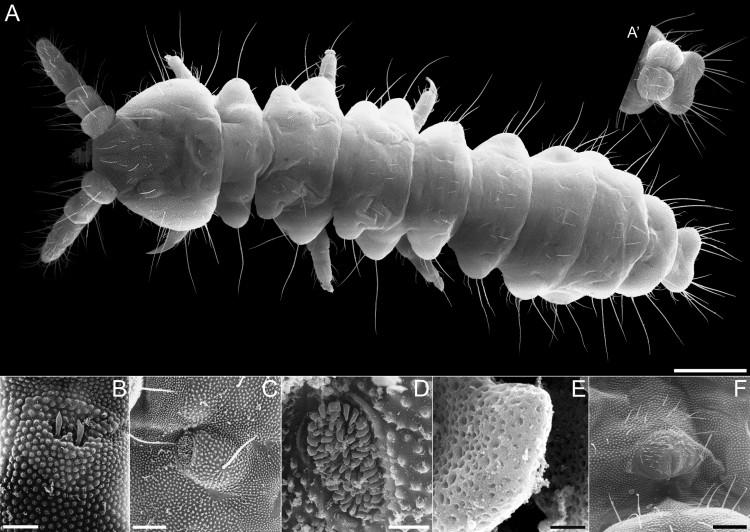The world’s deepest land-living animal, an arthropod called a springtail, has been found in Krubera-Voronja, the deepest known cave, located in the Western Caucasus mountains where Europe and Asia meet.
Springtails belong to the class Collembola and are commonly found in caves, where they feed on fungi and detritus. They have six legs, like insects, but lack wings.
Living in complete darkness at 1.98 km (1.23 miles) below ground, this minute eyeless creature has been named Plutomurus ortobalaganensis, and was found with three other new species, also springtails, by European scientists on the Ibero-Russian CaveX Team Expedition.
As part of the expedition, the scientists wanted to study the vertical distribution of invertebrates in the world’s deepest cave.
“We were really surprised by this biodiversity in the deep subsurface biosphere, in such kind of abiotic place, with no light and very low temperatures (0.5–5° Celsius),” researcher Sofia Reboleira from the University of Aveiro in Portugal told The Epoch Times via email.
Krubera-Voronja descends to 2.191 km (1.36 miles) beneath the Earth’s surface and is the only known cave to reach below 2 km (1.24 miles). Finding any animals deeper than the current record is therefore limited by their accessibility to humans.
“If cave exploration reveals major depths, we think that it is possible to find invertebrate life below that mark,” Reboleira added.
The four springtail species possess features typical of subterranean animals with no eyes or body pigmentation, and specialized sensory organs. For instance, one has a highly specialized chemoreceptor behind its antennae.
Study co-author Enrique Baquero at Spain’s University of Navarra explained via email that cave springtails usually have chemoreceptors on their antennae, and post antennal organs (PAO) used for chemoreception are usually small, with a few finger-like projections, and not elevated from the animal’s cuticle.
“We mention the spectacular chemoreceptor because [this] is the first time that a PAO is found with this shape,” he said.
The findings were published in Terrestrial Arthropod Reviews volume 5 (2012) pp. 35–85 on Feb. 22
The Epoch Times publishes in 35 countries and in 19 languages. Subscribe to our e-newsletter.






